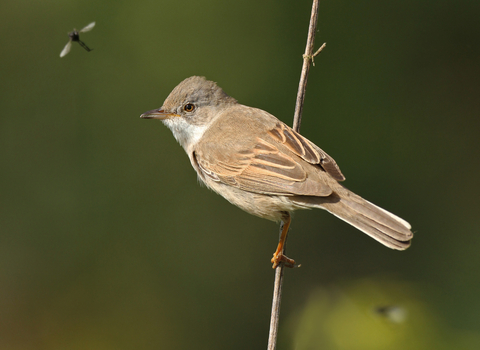
Whitethroat ©Jon Hawkins - Surrey Hills Photography
Whitethroat
The male whitethroat does, indeed, have a white throat! Arriving from Sub-Saharan Africa in April, it can be spotted on grassland and scrub, and along hedgerows. It is bigger than the lesser whitethroat.
Scientific name
Sylvia communisWhen to see
April to OctoberSpecies information
Category
Statistics
Length: 14cmWingspan: 20cm
Weight: 16g
Average lifespan: 2 years
Classified in the UK as Amber under the Birds of Conservation Concern 5: the Red List for Birds (2021).
About
The whitethroat is a medium-sized, long-tailed warbler of grassland, scrub and hedgerows. It is a summer visitor and passage migrant, breeding in many areas, but avoiding urban and mountainous places. Males whitethroats build nests out of twigs and roots and the females then decide which to take. whitethroats winter in Africa, leaving our shores in early October and heading as far as South Africa.How to identify
Male whitethroats are sandy-grey above, with pale grey heads, pinkish-buff breasts and bright white throats. Females are duller. They are larger than lesser whitethroats, have longer tails, and sport rusty-brown edges to their wing feathers.Distribution
A widespread summer visitor.In our area
The hedgerows at the edges of Venu Pools Reserve near Shrewsbury are perfect for seeing whitethroats. Listen out for their distinct call!
Did you know?
Male whitethroats arrive in the UK about 10 days earlier than females in order to set up territories before their potential partners arrive.The hedgerows at the edges of Venu Pools Reserve near Shrewsbury are perfect for seeing whitethroats. Listen out for their distinct call!

